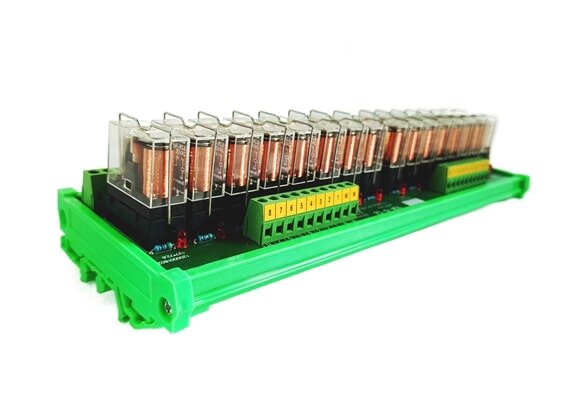Imagine your home's lights, fans, and even your coffee maker could all be automated with a small circuit board. This isn't a scene from a sci-fi movie; it's a reality brought about by the Relay Board. A powerful tool for electronics enthusiasts and smart home developers, the Relay Board, with its simple yet powerful functionality, bridges the physical and digital worlds.
1. What is a Relay Board?
At its core, a Relay Board consists of one or more relays—electrically controlled switches that control high-voltage devices using low-voltage signals. Simply put, it's like a magic switch: with a tiny signal, you can turn on a light bulb or start a water pump. A typical Relay Board module typically contains one to eight relay channels, each capable of independently controlling a single device. Powered by microcontrollers like Arduino, Raspberry Pi, or ESP32, they're suitable for DIY projects, smart home systems, and even industrial automation.
The Relay Board's appeal lies in its compatibility. Whether it's a 220V household appliance or a 12V DC device, the Relay Board can handle it. Its modular design simplifies wiring and debugging, making it easy for even beginners to quickly get started.

Relay Board
2. Why Choose a Relay Board?
Safety First: Relays use electromagnetic isolation to separate the low-voltage control side from the high-voltage device side, eliminating the risk of direct contact with high voltage.
Flexibility: From single-channel to multi-channel, and from 5V to 24V trigger signals, the Relay Board adapts to a variety of scenarios.
Ease of Use: With Arduino or MicroPython, you can implement timed on/off or remote control with just a few lines of code.
Low Cost: Compared to complex smart home systems, the Relay Board is affordable without sacrificing functionality.
3. Practical Application Scenarios
Smart Home
Want your lights to automatically turn on every evening? Connect the Relay Board to an ESP8266 and, with the Wi-Fi module, you can control them through a mobile app or voice assistant like Alexa. You can even set up sensors to automatically turn on a fan when someone enters the room.
Automated Irrigation
In your garden, the Relay Board can control a water pump, watering it on a schedule based on data from a soil moisture sensor. With a simple timer program, your plants can be self-sufficient. DIY Projects
For electronics enthusiasts, a relay board is the perfect companion for experimentation. Want to make a singing coffee machine? Use a relay board to control the machine's on/off function. Combined with a music module, you can wake up to the aroma of coffee and music in the morning.
4. How to Choose the Right Relay Board?
There are many different relay boards on the market, and there are several key factors to consider when choosing:
Number of Channels: Choose a module with 1, 2, 4, or more channels depending on the number of devices you need to control.
Trigger Voltage: Make sure the module's trigger voltage matches your microcontroller (commonly 5V or 3.3V).
Load Capacity: Check the relay's voltage and current rating to ensure it can support your device (e.g., 10A/250V AC).
Optocoupler Isolation: Modules with optocouplers provide additional safety, protecting the microcontroller from interference.
Suppose you want to control a light using an Arduino and a single-channel relay board. The wiring is simple:
Connect the relay board's VCC and GND pins to the Arduino's 5V and GND pins. Connect the signal pin (IN) to an Arduino digital pin (such as D2).
Connect the light's power wire to the normally open (NO) and common (COM) terminals of the relay.
Next, create some simple Arduino code. After uploading the code, the light will turn on and off every 5 seconds. Isn't that simple?
5. Precautions
Safety: When working with high-voltage devices, always disconnect the power cord and verify that the wiring is secure.
Heat Dissipation: When operating high-current devices for extended periods, ensure that the relay module has adequate heat dissipation space.
Debugging: When using it for the first time, test it with a low-voltage device (such as an LED light) first, and avoid connecting it directly to high-power appliances.
The Relay Board's potential goes far beyond this. With the development of the Internet of Things (IoT), combined with the MQTT protocol and cloud platforms, the Relay Board can be remotely monitored and controlled. For example, you can turn off the home heater from your phone at the office, or automatically adjust the ventilation system in your greenhouse based on weather data.
From DIY to industrial applications, the Relay Board continues to ignite creative ideas with its simplicity, reliability, and versatility. Whether you want to build a smart home or try a novel electronic project, this small Relay Board can be your starting point.